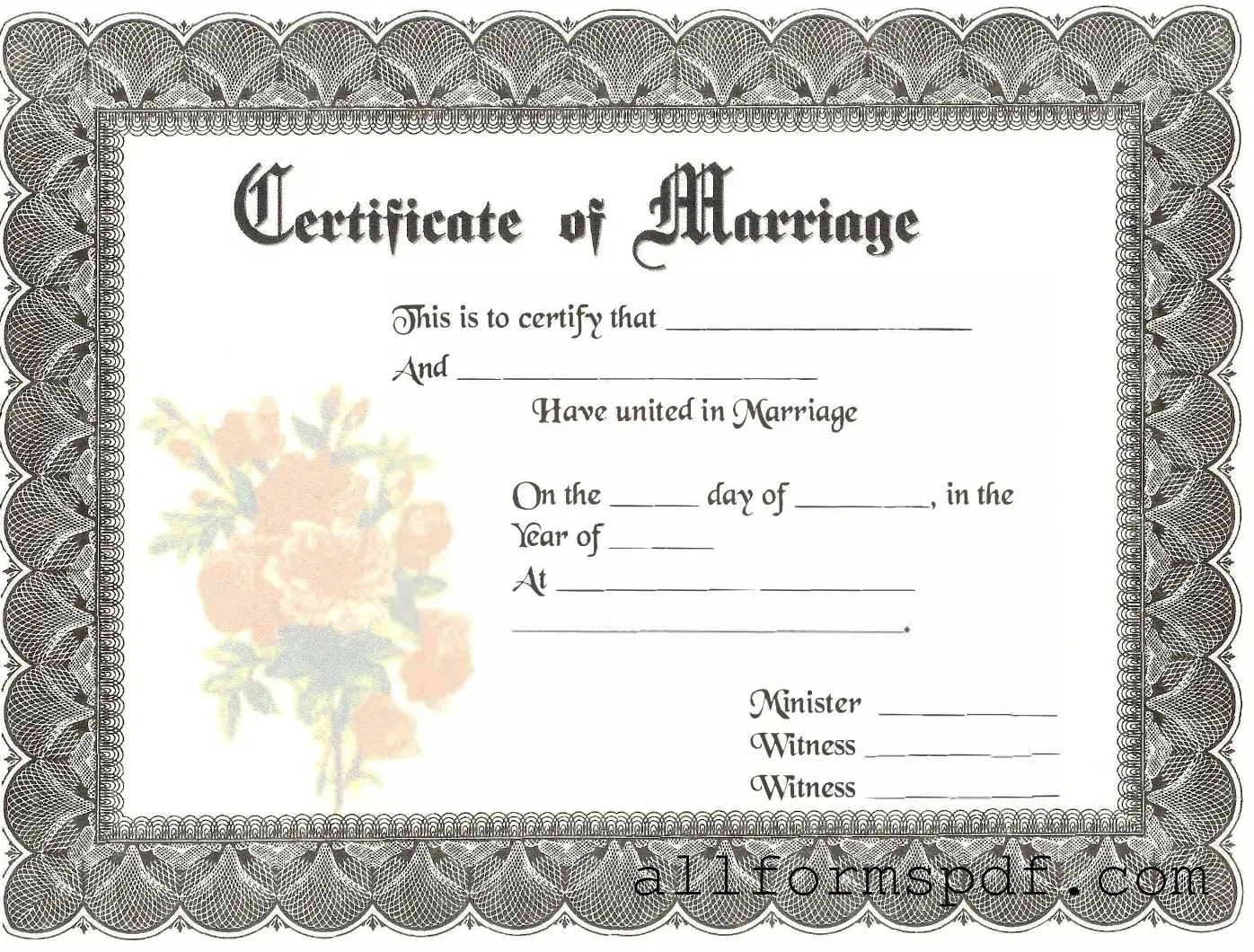Filling out a Marriage Certificate form is a crucial step in the process of formalizing a union. However, many individuals make common mistakes that can lead to delays or complications. Understanding these pitfalls can help ensure that the application is completed accurately and efficiently.
One frequent mistake is providing incorrect personal information. Names, dates of birth, and addresses must be precise. A simple typographical error can result in significant issues, including the need to refile the application. It is vital to double-check all entries against official documents to avoid such mistakes.
Another common error involves neglecting to include required signatures. Both parties must sign the form, and sometimes a witness signature is also necessary. Forgetting to sign or having an incomplete signature can lead to the rejection of the application. Each signature should be clear and match the names provided on the form.
People often overlook the importance of checking state-specific requirements. Different states have varying rules regarding what information is needed on the Marriage Certificate form. Failing to adhere to these requirements can result in delays or the need to start the process over. Researching state laws before filling out the form can save time and frustration.
Another mistake involves not providing accurate information about previous marriages. If either party has been married before, they must disclose this information, including the date of divorce or the death of a former spouse. Omitting this information can lead to complications later, especially if the previous marriage was not legally dissolved.
Additionally, individuals sometimes misunderstand the residency requirements. Some states require that at least one party be a resident. If this requirement is not met, the application may be denied. It is essential to check whether residency is a factor and to provide proof if necessary.
People also often fail to review the form for completeness. Leaving sections blank or providing insufficient information can lead to delays. Taking the time to read through the entire form before submission can help identify any missing details that need to be addressed.
Finally, not keeping a copy of the completed form can be a significant oversight. After submitting the application, it is wise to retain a copy for personal records. This can be helpful for future reference or in case any issues arise during processing.
